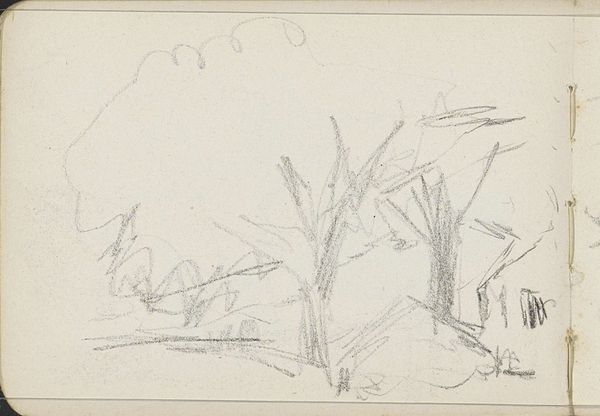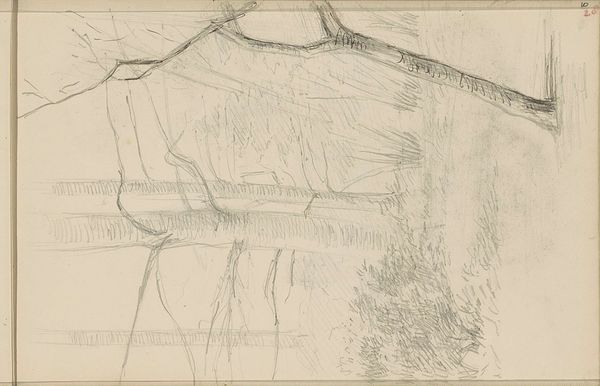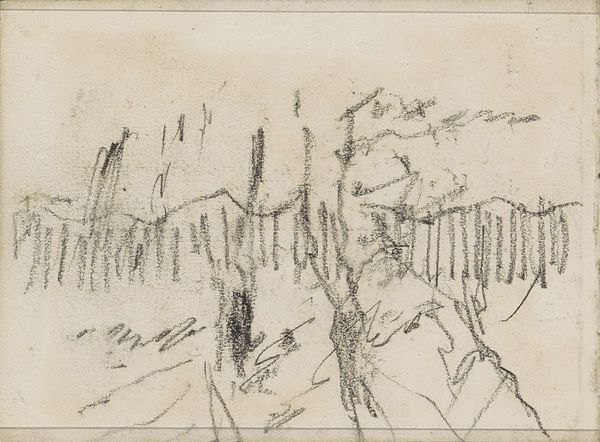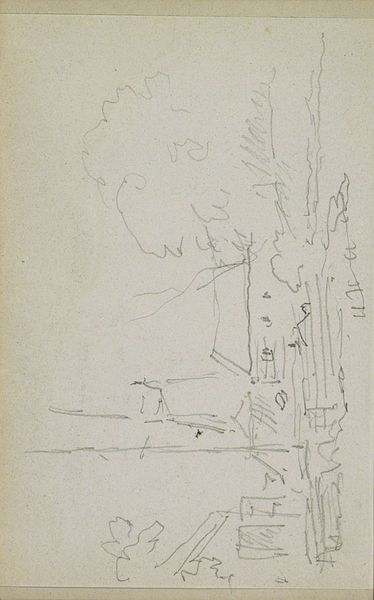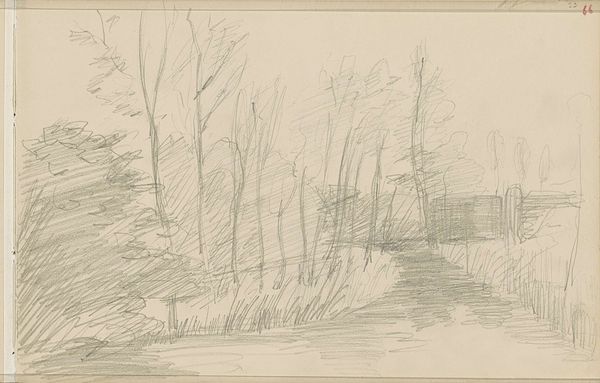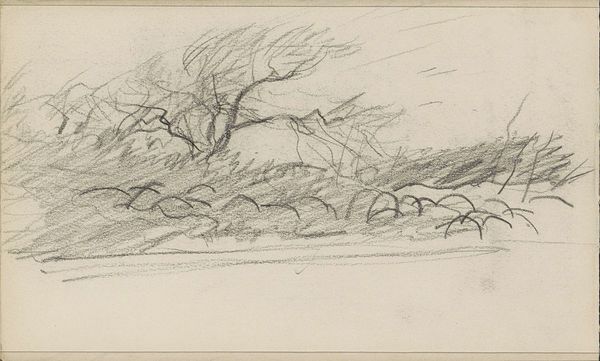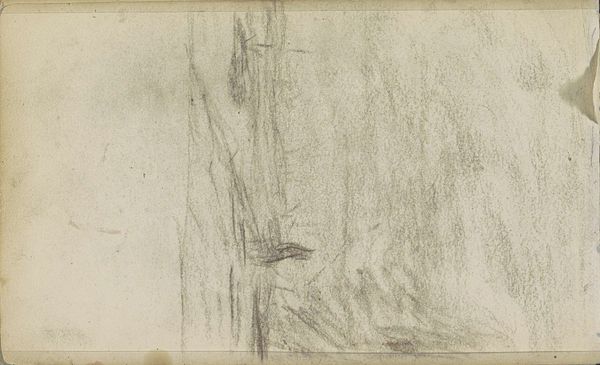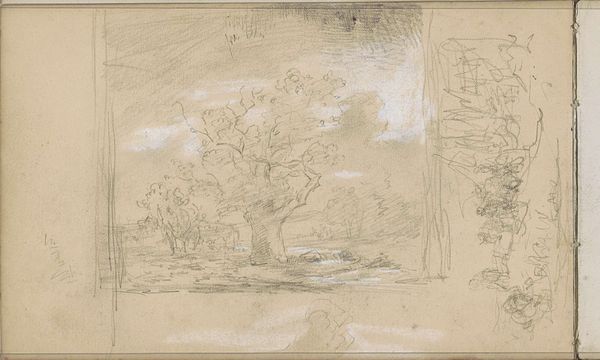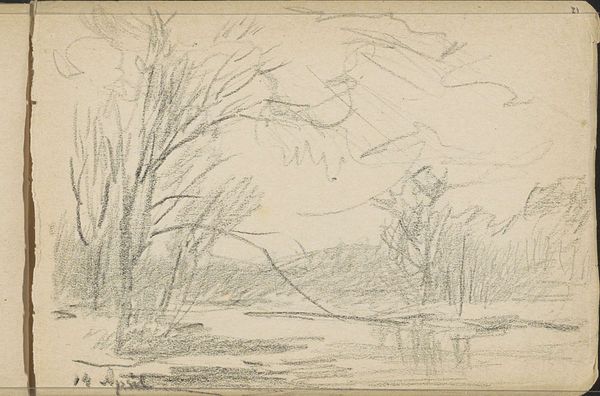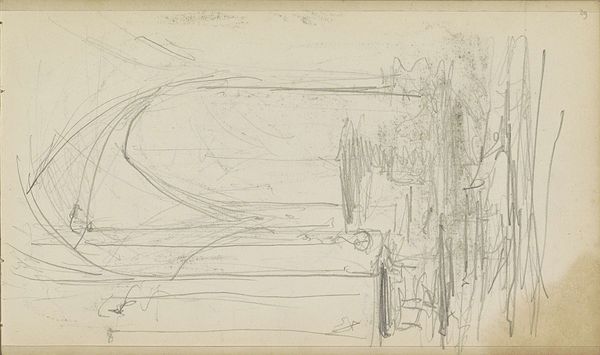
drawing, pencil
#
drawing
#
amateur sketch
#
toned paper
#
light pencil work
#
impressionism
#
pencil sketch
#
landscape
#
personal sketchbook
#
sketchwork
#
ink drawing experimentation
#
pen-ink sketch
#
pencil
#
horse
#
sketchbook drawing
#
sketchbook art
#
realism
Copyright: Rijks Museum: Open Domain
Curator: Here we have Anton Mauve's "Paard in een weide," or "Horse in a Meadow," created sometime between 1848 and 1888. It’s a delicate pencil drawing. Editor: It feels incredibly immediate, almost as if we're looking over Mauve’s shoulder as he's quickly sketching this scene. The pencil lines are so light. Curator: Precisely. Note the toned paper he's used, likely for quicker value assessment in the landscape. One could argue this is an instance of Impressionist influence via tonal studies. The loose application speaks to artistic explorations happening at the time, with materials becoming cheaper and therefore expendable for sketching practices. Editor: It strikes me as a private, almost intimate study. Given the subject and the setting, I imagine Mauve often went out into nature like this. How much did the accessibility of materials play a role in democratizing art and making it accessible? Curator: Massively. We’re moving away from guild systems controlling artistic production. Pigment production, readymade canvases and paper… all drastically change the material conditions of art making. Here in particular, pencil and toned paper facilitated easy transportation, which is especially significant as artists were venturing further and further into nature, looking to represent light in innovative ways. Editor: You see the shift away from highly academic studies that were almost entirely made in studios; here is the rise of something fleeting and genuine: a moment, rather than a meticulously planned composition. Its current home in the Rijksmuseum adds another layer. Public institutions validated artistic practices formerly deemed merely sketches. Curator: A shift reflected both in his working choices, in material selection for transportable expeditions, but also eventually validated as culturally significant via institutions that house his sketches and drawings, and present them in such a way that the general public has access. Editor: A fleeting moment preserved. From an artist's exploration to a nation's treasure. Curator: Indeed. It reveals not only a landscape, but how the very act of landscape representation was itself undergoing a dramatic transformation due to the availability of materials and therefore expanded social engagement outside the studio walls.
Comments
No comments
Be the first to comment and join the conversation on the ultimate creative platform.
